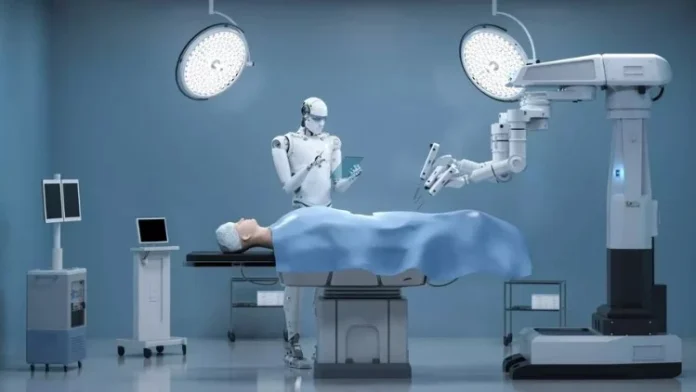Hospitals of the future will look dramatically different, with robotic command centers, AI-driven monitoring, and wearable-integrated care redefining how patients and doctors interact, experts revealed at the WHX Tech conference in Abu Dhabi this week.
Professor Georges-Pascal Haber, CEO of Cleveland Clinic Abu Dhabi, described a hospital landscape where surgeons control multiple operating rooms remotely via robots, while nurses monitor patients in their cars, homes, or even through wearable devices. “This is how we should be thinking of the hospital of the future,” he said. “It is going to be very different from what it is now.”
The three-day event, which brought together global healthcare leaders, spotlighted how artificial intelligence, robotics, virtual reality, cybersecurity, and big data are transforming the future of healthcare delivery.
AI transforming care and preventing burnout
According to Dr. Myriam Fernandez, Head of Health Innovation at Amazon Web Services, AI is already helping reduce physician burnout by tackling administrative overload. Nearly half of clinicians today suffer from burnout, she noted, with much of it linked to unnecessary paperwork.
Fernandez shared that AI-driven systems are reducing patient no-shows by 30 per cent, ensuring that the right patients meet the right professionals at the right time. Additionally, AI tools are connecting fragmented medical data into actionable insights, streamlining administrative processes, and freeing up doctors for clinical work.
Professor Haber highlighted how AI is already saving lives in Abu Dhabi. At Cleveland Clinic, algorithms continuously analyze patient data to detect and treat sepsis early—a life-threatening emergency. “We’ve been able to decrease the risk of death by at least 50 per cent,” he said.
Robotics revolutionizing logistics and supply
While robots in operating rooms often make headlines, experts also stressed their critical role in logistics. Dr. Meong Hi Son, Chief Medical Information Officer at Samsung Medical Center in Seoul, explained how robots were introduced five years ago to deliver supplies overnight.
Though initially challenging due to complex hospital layouts and foot traffic, the project became a success when robotics were combined with smart cabinets and predictive supply systems. Nurses no longer manually check inventory, as automated systems anticipate needs and restock accordingly. This shift has reduced storage requirements and freed nurses from repetitive tasks.
Facial recognition and automated emergency care
Dr. Harvey Castro, Advisor of AI and Healthcare for Singapore Government, revealed how future hospitals will integrate facial recognition into emergency care. Cameras equipped with AI will assess a patient’s condition upon arrival, tracking metrics like heart rate variability to prioritize urgent cases instantly.
“In the waiting room, AI will catch patients before they deteriorate and alert doctors immediately,” Castro explained. “As doctors assess symptoms, AI transcribes notes in real time, while pharmacists prepare the required medication.”
Beyond four walls
From robotic command centers to predictive logistics and AI-enabled diagnostics, experts agreed that the hospital of the future will extend far beyond traditional boundaries. Patient monitoring will increasingly happen at home, in vehicles, or through wearables, allowing care to be proactive rather than reactive.
As technology accelerates, tomorrow’s hospitals may not resemble today’s at all—but they promise a more connected, efficient, and patient-focused future.

